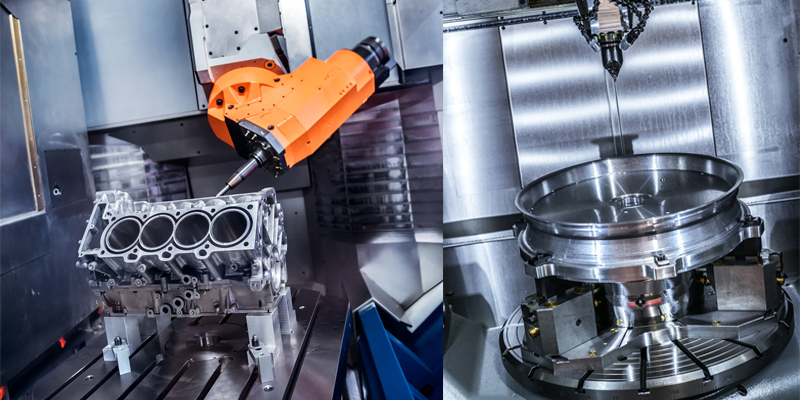Schedule a Call Back
Buyer's Guide to Overhead Cranes
 Technical Articles
Technical Articles- Jun 30,11
With competition sky-rocketing in all walks of life, business in particular, the Indian economy has witnessed some interesting trends in the recent years. While this competitive spirit has opened up a plethora of choices for the consumer, it has also left this consumer 'king' baffled. In today's marketplace, there are multiple options. Against this backdrop, a buying decision for an individual in the purchase department for any organisation can be cumbersome. It can be a nightmare especially in the case of purchase of machinery or equipment. Since the overhead crane sector is highly unorganised in India, customers often do not hold a chance to make an informed decision. This article attempts to demystify myths and assist prospective buyers of electric overhead travelling (EOT) cranes in the selection of equipment most suitable for their applications.

An overhead crane is a simple mechanism, which reduces human effort to lift and carry load from one place to another. Overhead cranes typically consist of a hoist to lift the load, the girder or the beam and a trolley to move along the girder. It is often seen that manufacturing floors have limited workspace. Overhead crane systems are a perfect solution for floors with little space. Support columns generally take up valuable floor space.
This can be avoided by using overhead cranes, making them a welcome addition to any floor already performing efficiently. Instead of requiring support columns, overhead crane systems are supported by the existing building structure. The first step in deciding whether an overhead crane is the right solution for your company is to consult a qualified architect or engineer. A building structure needs to be able to support the crane system, and professionals are the right people to determine that.
Selecting the right type of overhead crane is critical to streamlining the workflow and maximising productivity. Outlined below are twelve parameters, which can help buyers in choosing a well-designed and cost-effective lifting solution.
??The type of crane required is correctly determined
??The location is selected (whether indoor or outdoor or both)
??The safe working load selected is appropriate
??The class of duty is in conformity with the application
??The speeds are apt for the application intended
??The control system is in conformity with the application
??The hook and end approaches are minimum to enable maximum utilisation of the shop area
??The crane head room is minimum, so as to reduce the shop height
??The hook head room is minimum, so as to increase the height of the lift
??The wheel loads are minimum so that the gantry girder and column sizes are reduced to the minimum, saving building and foundation costs
??The down shop leads and LT rails have to be determined, and
??The owning and operating costs are minimum.
In order to address the above aspects profitably and make a profitable investment, it is imperative that all buyers should freely interact with the crane manufacturer and provide them all the available information so that the crane can be engineered optimally and a well-engineered turnkey solution can be sought. We shall now discuss each one of the above aspects.

Type of Crane
Various types of loads can be lifted by different types of cranes. There are several types of cranes that could be opted from. Some of the main types are:
??Single girder electrically operated/semi-electric/hand-operated cranes
??Double girder electrically operated/semi-electric/hand-operated cranes
??Single or double girder cranes designed as gantry cranes or semi-gantry cranes, and
??Special cranes.
The first two crane types are normally used in indoor applications, while the third type is normally used for outdoor applications. It must be understood that the lifting capacity and span do not play any role in the selection of type, though it is felt by many that a single girder crane cannot be selected for capacities in excess of 10 tonnes.
Location
A crane could be located either outdoor or indoor or at both places. It is important for the buyer to specify this appropriately. An outdoor duty crane has to be engineered considering wind forces and therefore specifying this is important. It would help the designer to optimally design the crane if the buyer also specifies the geographical location (besides simply specifying outdoor), so that the correct wind speeds are assumed while designing. Besides the wind loads, if the crane is operating in a coastal area it might need epoxy painting instead of normal synthetic enamel paint. This might also be applicable for indoor duty cranes operating in acidic or alkaline atmosphere.
Safe Working Load
Safe working load is defined as the load that could be lifted under the crane hook. If the crane is intended to be used along with a magnet, 'C' hook, grab, ladle or any other appliance, the dead weight of such an appliance should be specified so that the safe working load of the crane would be determined appropriately. Never build in factors of safety over and above what has been specified earlier, since this would result in over-engineering of the crane, leading to added costs.
Class of Duty
Cranes are classified from M1 to M8 depending upon their usage pattern. Higher the class of duty, higher would be the cost. Crane mechanisms also differ upon the utilisation. It should be remembered that while the crane is available 24/7, no crane operates 24/7 at its rated load and speed. The class of duty essentially depends upon the application of the crane, usage frequency and pattern. Ideally, the buyer should provide a load spectrum. This would be too difficult and hence the class of duty should be arrived at after explaining to the manufacturer of the crane its application in detail. Since the selection of the class of duty would not only determine the cost of the crane but also affect all the other points listed above, maximum attention should be paid to this aspect.

Speeds
Selection of speeds is directly dependent on the crane's usage and application. Increased speeds (where not required) would increase the power rating of motors, increasing the cost of the crane as well as the owning and operating cost.
Control System
A variety of control systems are possible such as pendent control from floor, fixed cabin control, movable cabin control, control through radio remote control, etc. Appropriate selection, once again, depends on the application.
Hook Approaches and End Approaches
In no crane can one expect the hook to be in line with the column or reach up to the end of the shop. In other words, some loss of built-up area cannot be avoided. The appropriate approach would be to minimise this loss, so as to obtain maximum utilisation of the built-up area. To ensure this, the mechanisms have to be designed optimally, and this would very much depend upon the class of duty selected. Since the class of duty is totally dependent upon the application, we once more emphasise the need for the buyer and the manufacturer to understand the application and usage pattern fully.
Crane Headroom
This is defined as the highest obstruction of the crane above the long travel rail top. Lower the dimension, lower could be the building height. This too is dependent upon the class of duty, which in turn is dependent upon the application. A reduced building height would certainly reduce the building cost.
Hook Headroom
This is defined as the distance of the hook at its highest elevation, below the long travel rail top. This should be minimum to optimise the column height, so as to reduce the building cost. The sum of dimension 8 and 9 would be constant for a given crane. Hence, if the crane is to be installed in an existing shop, one could distribute this sum so as to optimise the usage of the shed.
Wheel Loads
For a given crane, heavier the crane and the trolley, higher would be the wheel load. This has a direct impact on the gantry girder selection, column design and foundation. It is a misconception that a heavier crane is a stronger and safer crane. So long as the crane is engineered to satisfy all the clauses of the relevant IS specifications, the weight of the crane and trolley should not be the method of establishing the strength and safety of the crane. In fact the buyer should opt for the lightest crane with the least wheel loads.
Down Shop Leads and LT Rails
Down shop leads is the power supply system adopted to feed the crane with electrical power. There are several systems possible. The safest system is through shrouded busbars, since this provides maximum safety and does not affect end approaches at all. Bus bars have to be selected based on the connected load. If multiple cranes are proposed to be operated, the connected loads of all such cranes have to be considered while selecting the busbar rating. The buyer therefore has to provide this data. The same applies to LT rail selection too.
Owning and Operating Costs
A crane is invariably installed at an elevation of six or more metres above the floor level. Hence a crane involving minimum maintenance should be preferred. By providing leak proof gearboxes, lifelong lubricated bearings, appropriately selected wire rope and optimally selected electrics, one can achieve this objective.
The other factors that influence the cost of the crane are:
??Provision of full length platform on both girders.
??Provision of hydraulic or spring buffers.
??Provision of under-bridge lighting.
??Provision of closed, glazed and air-conditioned cabin.
It is important that the need for all the above additional features is carefully evaluated.
Once the specifications are finalised and frozen, vendor(s) will have to be selected to obtain quotes. Listed below are a few important points to be considered when choosing the crane vendor:
??Experience, including client list, number of years in business, number of cranes currently manufactured per year, technical tie-ups and collaboration if any, etc
??Existing design team and their experience
??Manufacturing facilities, including handling capacity, trained and experienced craftsmen and supervisors
??Sub-contractors and their technical capability
??In-house load testing facility, which should include test pit and calibrated test loads
??Surface treatment and painting facility, which should include shot blasting and dedicated paint booth
??Empowered and independent quality assurance team and their experience
??Welder's testing and systematic periodic approval procedure and maintenance of records
??Stocks of critical items always maintained
??Dedicated erection and commissioning teams located at various locations
??Provision of AMC (annual maintenance contract)
??Dedicated after-sales and service team
??Availability of spares on a timely basis, and
??Adherence to safety and environment-friendly manufacturing norms.
Having selected the vendor(s) with the above guidelines, the buyer is now ready to float a technically complete enquiry, obtain technical and commercial quotes, evaluate and then place the order for the crane. Any workshop that requires a cost-effective solution for material handling while saving precious workspace should definitely consider overhead cranes. However, proper consultation and consideration should be done before making a purchase, as there are many overhead crane options available. The crane solution you select should truly be the best fit for your business needs.
Related Products

Robot Plus
Schunk Intec India Pvt Ltd offers a wide range of robot plus.

Bmt Tool Disc and Tool Holders
Prominent Machine Tools offers a wide range of BMT tool disc and tool holders.

Av Automatic Transfer Switch for Seamless Power
HPL Electric & Power Limited offers a wide range of AV automatic transfer switch for seamless power.




















